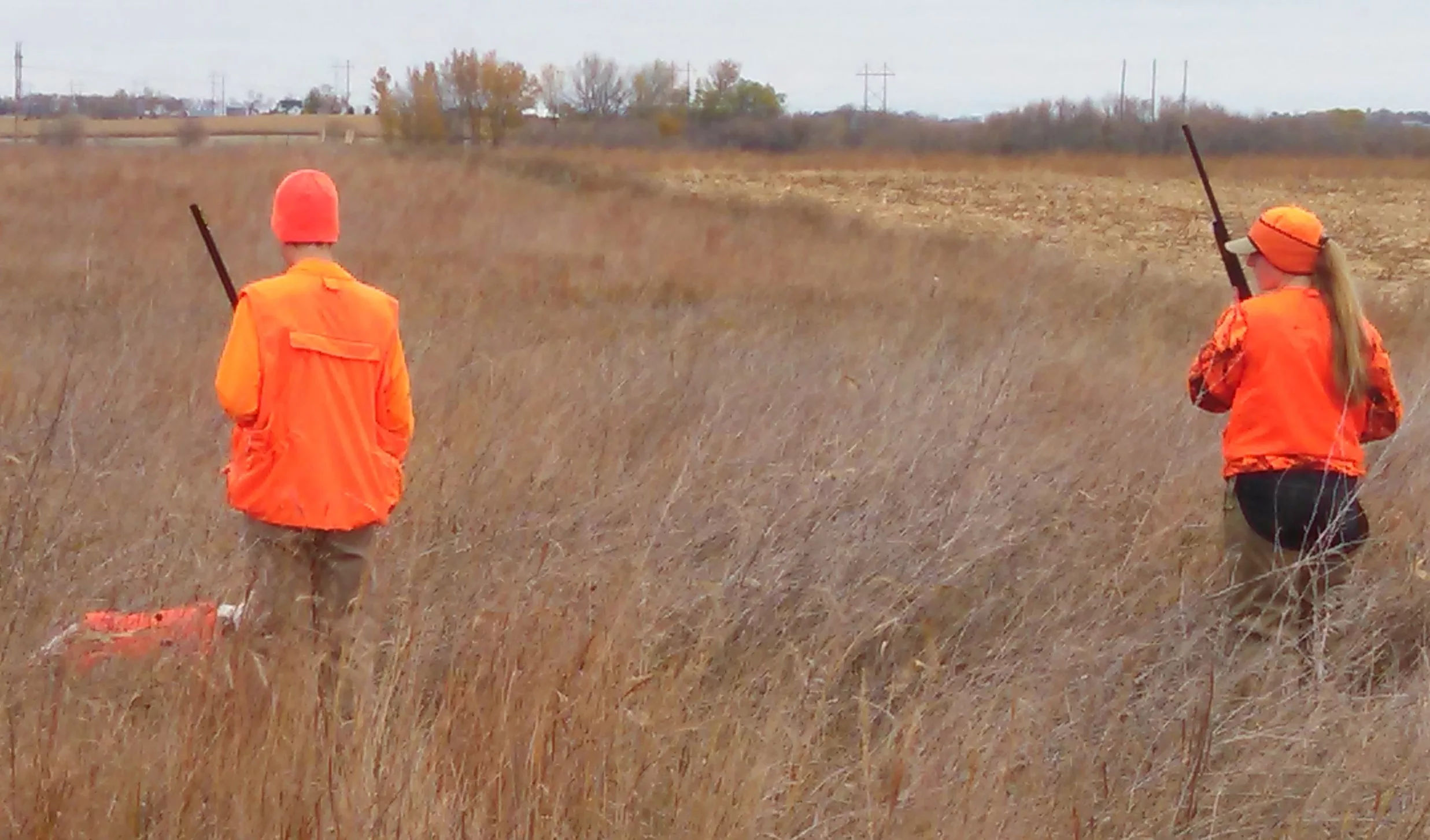
Are your local legislators hunters and anglers? Does the politician you’re voting for promote conservation or programs that fund public access? Take the time now to scout out their record and stances and cast your vote accordingly as a responsible hunter and angler. Simonson Photo.
By Nick Simonson
It’s the little things that catch the attention of hunters this time of year. The grouping of mourning doves at the corner of the undeveloped road on the fringe of our neighborhood, and the outgoing evening phalanx of Canada geese are just a couple of subtle signs that there’s a shift in the world around me, even on the edge of suburbia. The growing antlers on my trail camera roll this weekend, and the half-mature pheasants running in and out of the ditch grass on the way to inspect it are more obvious hints that fall is upon us. Whether large or small these signs all build toward the coming seasons of waterfowl, upland, and big game hunting that are rapidly approaching.
But there’s another season that’s becoming even more evident than the start of autumn hunting seasons, and it’s about to kick into full swing. However, it will likely have more impact on the future of hunting – and angling and outdoor activity and wildlife populations and water quality and soil health and innumerable other issues and influences that affect and are adjacent to hunting – and that’s election season.
While wading through the on-air advertisements, counting of yard signs, and clicking the X on the pop-up window in your web browser, every four years (or every two if you’re really paying attention) knowing how the candidates in your area vote or will vote on these issues – and whether or not they’re hunters, anglers or conservationists like you – should play as big a role in your decisions in November as to what you see on your trail camera, or from your scouting trips as you size up the coming firearms deer season.
Hunters and anglers make up approximately 20 percent of the population in the United States; a significant voting bloc which runs across four generations, both genders, multiple ethnicities and ancestries, and families consisting of tenth-generation Americans to those who just arrived here, all sharing a common bond in the outdoors. While our interests may differ between what we hunt and fish for – pheasants or ducks, bass or walleyes, deer or elk – we all depend on those in Washington D.C. and our state legislatures to do what they can via funding and state programs to support the three-legged stool of the North American Hunting Model. And knowing their records on supporting bills that build habitat, open access, and conserve fish and game should be a major part of the fall efforts from each hunter and angler casting their votes.
Like the subtle shifts in animal behavior this time of year, and the careful movement of deer through a wooded trail, politicians’ motives can be difficult to detect and follow.
However, with the giant spotlight of the internet, and the search tools available from watchdog groups, government agencies, and even just concerned hunters and anglers like you who keep track of that sort of thing; determining where candidates stand on issues important to hunting, fishing, conservation and access is easier to learn than ever.
As a result of this more open availability of that information, hunters and anglers can figure out more about politicians and where they stand – and more importantly, for incumbents, how they’ve acted in the past – on wildlife, conservation, and hunting-related issues. All it takes is an hour of your time, which is likely less than what you’ve spent thus far on scouting those favorite waterfowl fields or cleaning up brush around your deer stand ahead of the archery opener.
In the end too, though this season’s candidates are more accessible than ever, should you be unable to identify their position on important outdoor issues you can simply ask and expect a response within minutes. Email, Twitter, Facebook, Tik Tok, even good old phone calls and in-person discussions at rallies and town halls, provide hunters and anglers with multiple forums to connect with candidates and learn their stance on how important the outdoors is to them and what they have done or will do to preserve those opportunities for you and the future sportsmen and sportswomen of America.
This election season, scout out the candidates in your area. Beware of the camouflage that a party affiliation provides and get down to the matters of where they stand on hunting, angling, access and conservation regardless of which side of the aisle they might be on. Start paying attention to the past signs and the tracks they’ve left in helping or hindering your upcoming hunts through their words and legislative actions. In doing so, and casting your vote accordingly this November, you’ll be doing your part in electing those who work to open and preserve opportunities for all…in our outdoors.
Simonson is the lead writer and editor of Dakota Edge Outdoors.
